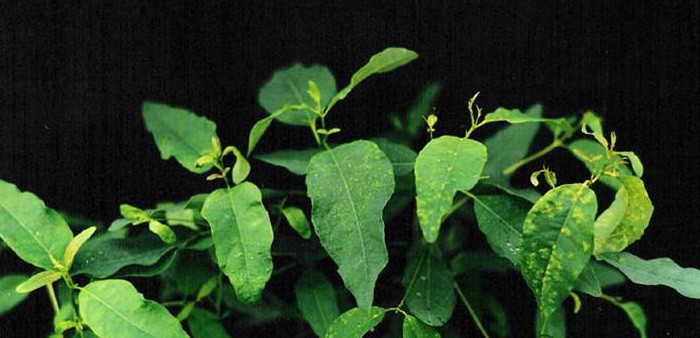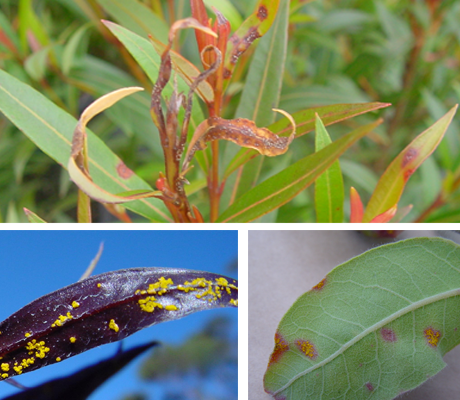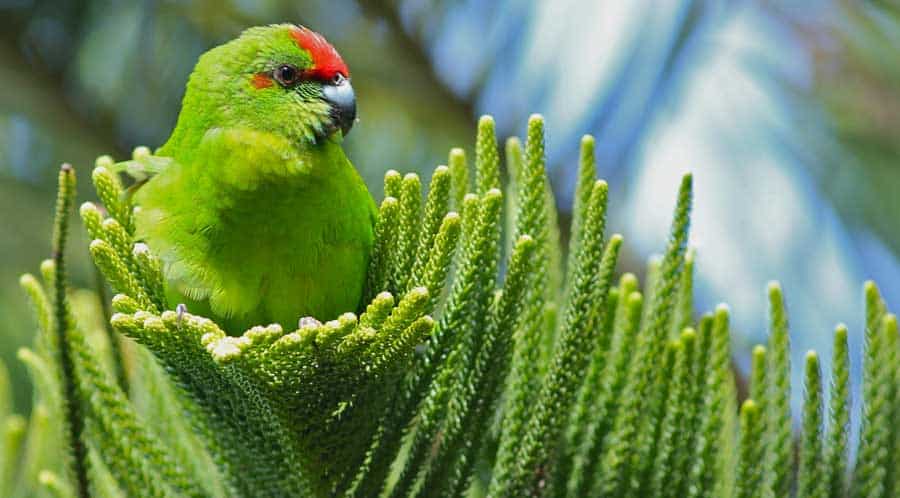Despite government recognition of the high threat level, Australia was poorly prepared for an incursion.
How did Australia respond to the incursion?
On 23 April 2010, presence of the rust was confirmed at a nursery in NSW. One week later, on 30 April 2010, the National Management Group decided against an eradication attempt, deeming it not feasible even though the rust had been detected on only 2 properties and not in bushland.
Under pressure from key groups, including Plant Health Australia and Nursery and Garden Industry Australia, an eradication program was launched in July, involving up to 380 staff. This ceased in late December after advice that eradication was no longer feasible because the rust was spreading in bushland, facilitated by wet summer weather.
This response to the arrival of myrtle rust was heavily criticised by environmental, industry and government stakeholders, including the Invasive Species Council.
Australia’s missed chance to detect and stop myrtle rust early, due to poor surveillance and poor decision-making, has had serious consequences.
What did we learn?
Myrtle rust is one of the most threatening invaders of the natural environment, yet there has been minimal engagement of the environment sector and community in preparing for and responding to the incursion.
In May 2011 the Invasive Species Council proposed a Senate inquiry into the myrtle rust response so that policies and procedures can be improved by learning from its successes and failures. In 2014, the Senate held a broad-ranging inquiry to look at the failures in quarantine since 2000, including the incursion of myrtle rust in 2010. The Invasive Species Council prepared a detailed myrtle rust case study as part of its submission to the Senate inquiry.
The final report of the Senate inquiry documented deficiencies in the response to myrtle rust to highlight weaknesses in Australia’s preparedness for environmental invasive species.
A national action plan to address plant conservation was not published until July 2020 – a decade after the rust arrived.
What should be done now
Review biosecurity arrangements
Conduct an independent review to consider how national and state/territory biosecurity regimes could be improved to reduce the risk of further incursions and detection/eradication of the rust should further incursions occur.
Aim to keep further strains out of Australia
High priority should be given to keeping further biotypes of eucalyptus or myrtle rust out of Australia; new strains could considerably exacerbate the disease and the number of species affected.
Conduct research to assess ecological impacts
Develop a comprehensive ecological research program to assess the likely ecological impacts of the disease and management options. A scientific panel should be established to advise on the research program and management options.
Save threatened species
The seeds and tissues of some newly endangered plants have been preserved at the Australian PlantBank of The Royal Botanic Gardens in Sydney. The seeds of the most threatened species are no longer produced in the wild, and they do not remain viable in seed banks anyway, requiring a focus on difficult and costly tissue culture cryopreservation.
Resistant individuals of some rare species have been located, and their seeds will be used in restoration projects, or to grow plants in gardens in regions too dry for myrtle rust.
The plants threatened by myrtle rust need more attention and better funding. Endangered mammals and birds attract far more conservation funding in Australia than plants.
Involve environmental NGOs and agencies in response management
Ensure that environment NGOs are accorded equality with industry groups in all government processes to respond to the disease and biosecurity arrangements. Environmental agencies should be involved in all relevant government decision making.
Develop cost-sharing arrangements for priority actions in the national interest
Develop a national response to myrtle rust that involves cost-sharing for high-priority actions that are primarily in the public interest.
The bigger picture
The story of myrtle rust incursion is symbolic of a biosecurity system that struggles to protect Australia’s environment. Without significant reform, Australia risks losing a large part of its unique ecological heritage. The Invasive Species Council continues to push for changes in biosecurity preparedness, research, and management.
Find out more










